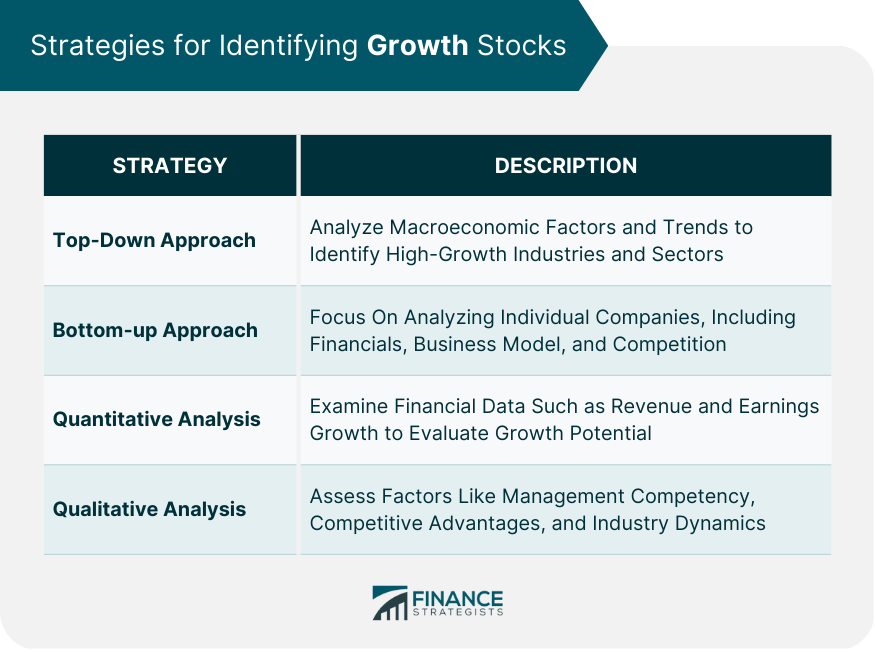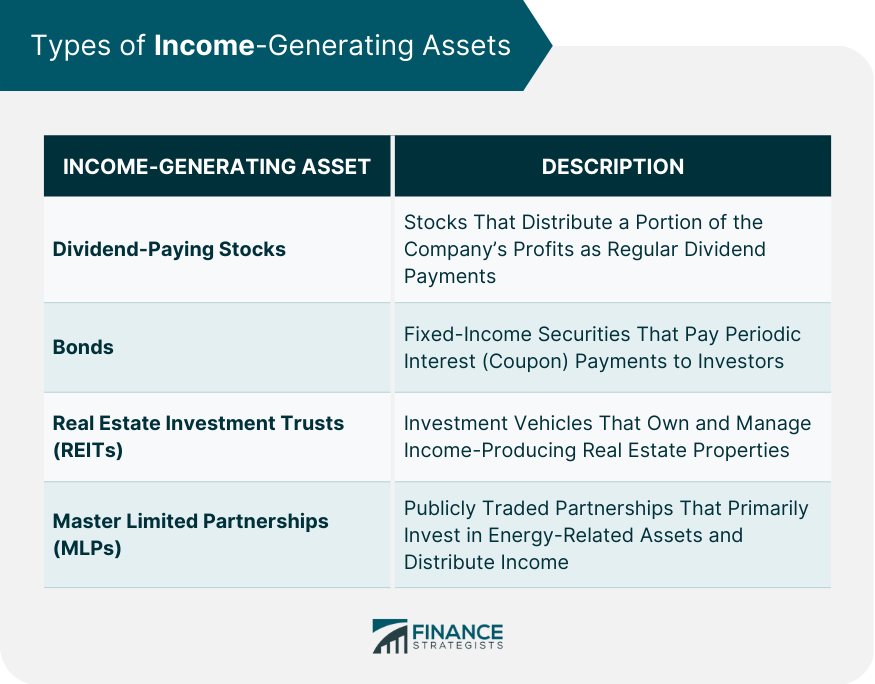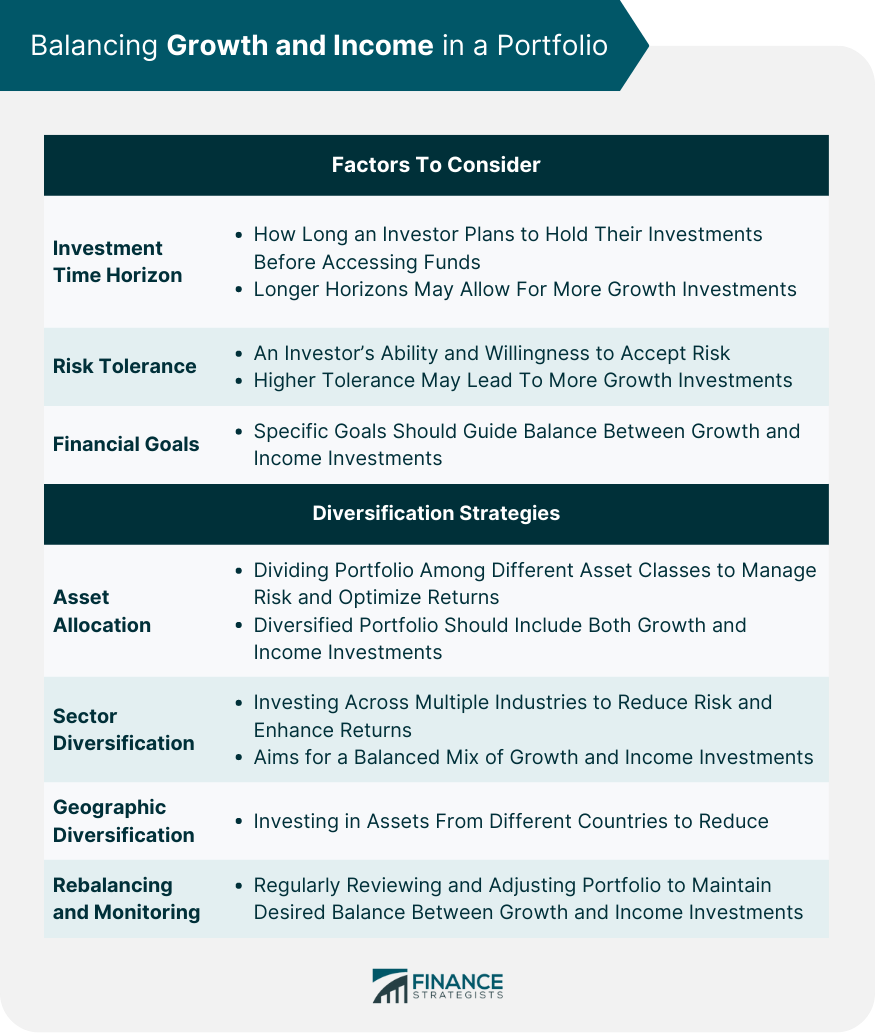Growth investing is an investment strategy focused on seeking capital appreciation through the purchase of stocks with high potential for growth. These companies typically experience above-average earnings growth and have the potential to outperform the market over time. Growth stocks are characterized by their robust and sustained earnings growth. Companies with high earnings growth rates often reinvest their profits into expanding their businesses, developing new products, or entering new markets. Another characteristic of growth stocks is their ability to expand their market presence. This can be achieved through innovative product offerings, disruptive business models, or strategic acquisitions that enable them to penetrate new markets and gain market share. Growth stocks often possess competitive advantages that allow them to sustain their growth rates. These advantages may include a strong brand presence, proprietary technology, or a unique business model that sets them apart from their competitors. The top-down approach involves analyzing macroeconomic factors and trends to identify industries and sectors poised for growth. Once potential sectors are identified, investors can then focus on individual companies within those sectors that exhibit strong growth characteristics. The bottom-up approach is centered on analyzing individual companies rather than focusing on broader economic trends. Investors using this approach will conduct in-depth research on a company's financials, business model, and competitive landscape to identify potential growth stocks. Both quantitative and qualitative analysis are essential when evaluating growth stocks. Quantitative analysis involves examining financial data such as revenue and earnings growth, while qualitative analysis focuses on factors like management competency and competitive advantages. Growth stocks can be more volatile than other types of investments due to their high growth expectations. This can result in significant fluctuations in stock prices, potentially leading to short-term losses for investors. Investors should be cautious of overvalued growth stocks, as their high valuations may not be justified by their earnings potential. Overvalued stocks can be susceptible to sharp declines if their growth expectations are not met. Income investing is an investment strategy focused on generating a steady stream of income through dividends, interest, or other forms of investment income. Income investments typically provide lower risk and more stability than growth investments, making them an essential component of a diversified portfolio. Dividend-paying stocks offer investors a share of the company's profits through regular dividend payments. Dividend stocks can provide both income and potential capital appreciation, making them an attractive investment option. Bonds are fixed-income securities that pay periodic interest payments, known as coupon payments, to investors. Bonds can be issued by governments, corporations, or other entities and can offer varying levels of risk and return. REITs are investment vehicles that own and manage income-producing real estate properties. Investors can purchase shares in a REIT and receive regular dividend payments from the income generated by the underlying properties. MLPs are publicly traded partnerships that primarily invest in energy-related assets, such as pipelines, storage facilities, and other infrastructure. MLPs pass through a significant portion of their income to investors in the form of distributions, which can provide an attractive income stream. Dividend yield is a financial ratio that measures the annual dividend income as a percentage of the stock's current market price. Investors can use dividend yield as a tool to identify income investments with attractive income potential. The dividend growth rate indicates the historical growth rate of a company's dividend payments. Investors can use this metric to identify companies with a track record of consistently increasing their dividends, which may signal financial stability and commitment to returning value to shareholders. The payout ratio measures the percentage of a company's earnings paid out as dividends. A lower payout ratio suggests that a company is retaining more earnings for growth, while a higher payout ratio may indicate that the company is prioritizing income distributions to shareholders. Credit ratings are assessments of the creditworthiness of bonds and other fixed-income securities. Investors can use credit ratings to evaluate the potential risks associated with a bond investment and make informed decisions about their income portfolio. Interest rate risk is the potential for bond prices to decline as interest rates rise. When interest rates increase, the value of existing bonds with lower coupon rates becomes less attractive, leading to a decline in their market prices. Credit risk is the possibility that a bond issuer may default on its interest or principal payments, resulting in a loss for investors. Investors should carefully consider the creditworthiness of bond issuers and diversify their fixed-income investments to mitigate credit risk. Inflation risk refers to the potential for rising inflation to erode the purchasing power of investment income. Investors should seek income investments with the potential to generate returns that outpace inflation over the long term. An investor's time horizon is the length of time they expect to hold their investments before needing to access their funds. Investors with longer time horizons may be able to assume more risk and allocate a larger portion of their portfolio to growth investments. Risk tolerance is an investor's ability and willingness to accept investment risk. Those with higher risk tolerance may choose to allocate more of their portfolio to growth investments, while more risk-averse investors may prioritize income investments. Investors should consider their specific financial goals when determining the balance between growth and income investments in their portfolio. For example, those focused on building wealth for retirement may prioritize growth investments, while investors seeking regular income may prioritize income investments. Asset allocation involves dividing an investment portfolio among different asset classes, such as stocks, bonds, and cash, to manage risk and optimize returns. A well-diversified portfolio will typically include a mix of both growth and income investments. Investing in different industry sectors can help reduce risk and enhance returns, as different sectors often perform differently under various market conditions. Investors should strive for a balanced mix of growth and income investments across multiple sectors. Geographic diversification involves investing in assets from different countries and regions to reduce the impact of country-specific risks on a portfolio. By including both domestic and international growth and income investments, investors can further diversify their portfolios and manage risk. Regularly reviewing and rebalancing a portfolio can help investors maintain their desired balance between growth and income investments. Rebalancing involves adjusting the portfolio's asset allocation by selling or buying investments to return to the original target allocation. This process can help investors manage risk and stay on track to achieve their financial goals. Balancing growth and income in a portfolio requires careful consideration of several factors, including investment time horizon, risk tolerance, financial goals, and diversification strategies. Growth investing is focused on seeking capital appreciation through investing in stocks with high potential for growth, while income investing seeks to generate a steady stream of income through dividends, interest, or other investment income. Each approach has its own unique characteristics, strategies for identifying potential investments, and associated risks. To balance both approaches, investors should diversify their portfolio across different asset classes, industry sectors, and geographic regions, while regularly reviewing and rebalancing their portfolio to maintain their desired balance between growth and income investments. Ultimately, the right balance will depend on an investor's specific financial goals and risk tolerance, and a well-designed portfolio can help achieve those goals while managing risk.Growth Investing Overview
Characteristics of Growth Stocks
Earnings Growth
Market Expansion
Competitive Advantages
Strategies for Identifying Growth Stocks

Top-Down Approach
Bottom-up Approach
Quantitative and Qualitative Analysis
Risks Associated With Growth Investing
Volatility
Valuation
Income Investing
Definition and Overview
Types of Income-Generating Assets

Dividend-Paying Stocks
Bonds
Real Estate Investment Trusts (REITs)
Master Limited Partnerships (MLPs)
Strategies for Identifying Income Investments
Dividend Yield
Dividend Growth Rate
Payout Ratio
Credit Ratings
Risks Associated With Income Investing
Interest Rate Risk
Credit Risk
Inflation Risk
Balancing Growth and Income in a Portfolio

Factors to Consider
Investment Time Horizon
Risk Tolerance
Financial Goals
Diversification Strategies
Asset Allocation
Sector Diversification
Geographic Diversification
Rebalancing and Monitoring the Portfolio
Conclusion
Growth and Income Investing FAQs
Growth investing focuses on capital appreciation by investing in companies with high growth potential, while income investing seeks to generate a steady stream of income through dividends, interest, or other forms of investment income. Both strategies are essential components of a well-rounded portfolio and contribute to the overall success of growth and income investing.
To identify growth stocks, you can use strategies such as the top-down approach, which involves analyzing macroeconomic factors to identify high-growth sectors, or the bottom-up approach, which focuses on analyzing individual companies. Quantitative and qualitative analysis can also be used to evaluate financial data and competitive advantages, helping you find suitable growth stocks for your growth and income investing portfolio.
For your growth and income investing portfolio, consider including dividend-paying stocks, bonds, real estate investment trusts (REITs), and master limited partnerships (MLPs). Each of these income-generating assets offers unique benefits and risks, so it's essential to diversify your portfolio across multiple asset types to manage risk effectively.
To balance growth and income investments, consider factors such as your investment time horizon, risk tolerance, and financial goals. A well-diversified growth and income investing portfolio should include a mix of both growth and income investments across various asset classes, industry sectors, and geographic regions. Regularly monitor and rebalance your portfolio to maintain your desired balance and manage risk.
The main risks associated with growth investing include volatility and valuation, while income investing risks include interest rate risk, credit risk, and inflation risk. To mitigate these risks, diversify your growth and income investing portfolio across various asset classes, industry sectors, and geographic regions. Regularly monitor and rebalance your portfolio to maintain your desired risk level and stay on track to achieve your financial goals.
True Tamplin is a published author, public speaker, CEO of UpDigital, and founder of Finance Strategists.
True is a Certified Educator in Personal Finance (CEPF®), author of The Handy Financial Ratios Guide, a member of the Society for Advancing Business Editing and Writing, contributes to his financial education site, Finance Strategists, and has spoken to various financial communities such as the CFA Institute, as well as university students like his Alma mater, Biola University, where he received a bachelor of science in business and data analytics.
To learn more about True, visit his personal website or view his author profiles on Amazon, Nasdaq and Forbes.











